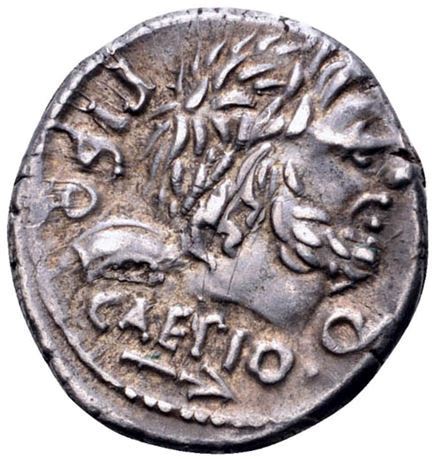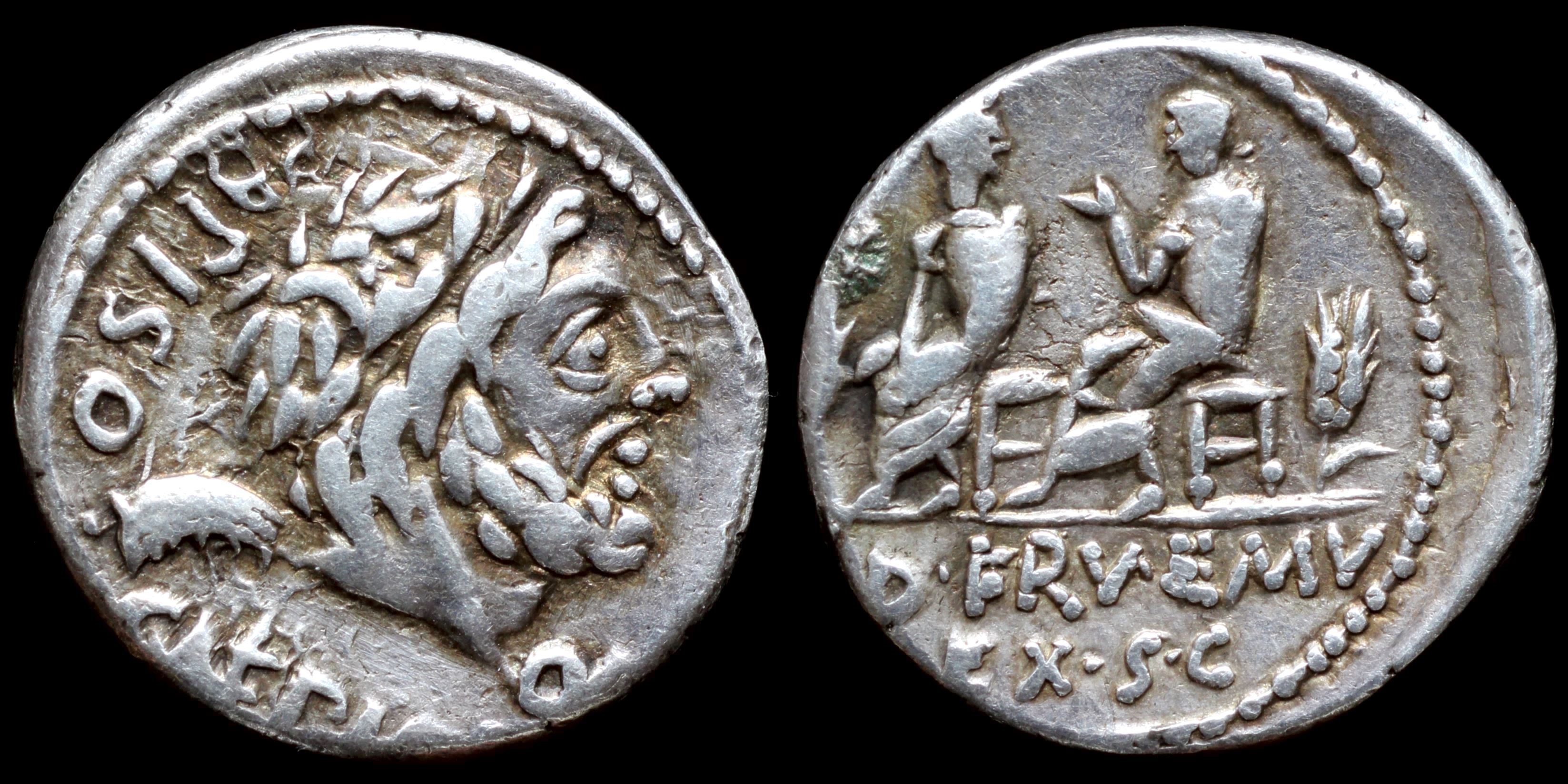L. Calpurnius Piso Caesoninus was one of the moneyers for the year 100 BC. He was Quaestor Ostiensis - in Ostia - in the same year.
Gens Calpurnia was a plebeian family at Rome, which first appears in history during the third century BC. The first of the gens to obtain the consulship was Gaius Calpurnius Piso in 180 BC, but from this time their consulships were very frequent, and the family of the Pisones became one of the most illustrious in the Roman state. Two important pieces of Republican legislation, the lex Calpurnia of 149 BC and lex Acilia Calpurnia of 67 BC were passed by members of the gens.
The cognomen Caesoninus indicates that the forefather of this branch was originally adoped into gen Calpurnia from gens Caesonia.
Gens Calpurnia was a plebeian family at Rome, which first appears in history during the third century BC. The first of the gens to obtain the consulship was Gaius Calpurnius Piso in 180 BC, but from this time their consulships were very frequent, and the family of the Pisones became one of the most illustrious in the Roman state. Two important pieces of Republican legislation, the lex Calpurnia of 149 BC and lex Acilia Calpurnia of 67 BC were passed by members of the gens.
The cognomen Caesoninus indicates that the forefather of this branch was originally adoped into gen Calpurnia from gens Caesonia.


Obverse: head of Saturn right, harpa left; PISO · CAEPIO· Q
Reverse: two questors seated left between two stalk of grain; AD·FRV·EMV / EX·S·C
Diameter:
18 mm
Die Orientation: -
Weight: 4.1 g
Die Orientation: -
Weight: 4.1 g
This exceptional type was a joint issue of the Quaestor Urbanus (Caepio) and the Quaestor Ostiensis (Piso), struck to finance discounted grain on the initiative of Saturninus (lex frumentaria de semissibus et trientibus = one semis and one triens for modius). Coins were struck by special decree of the Senate (Ad frumentum emundun, ex senatus consulto) in order to fulfill above-mentioned decree.
Crawford 330/1b, SRCV I 210, Sydenham 603a, RSC I Calpurnia 5a
